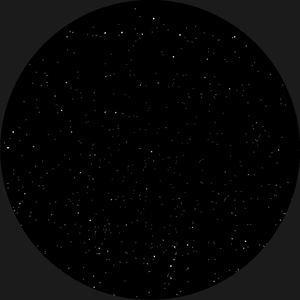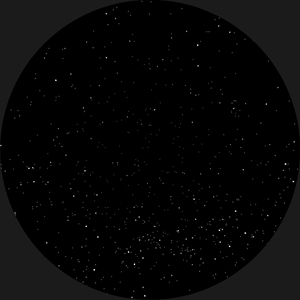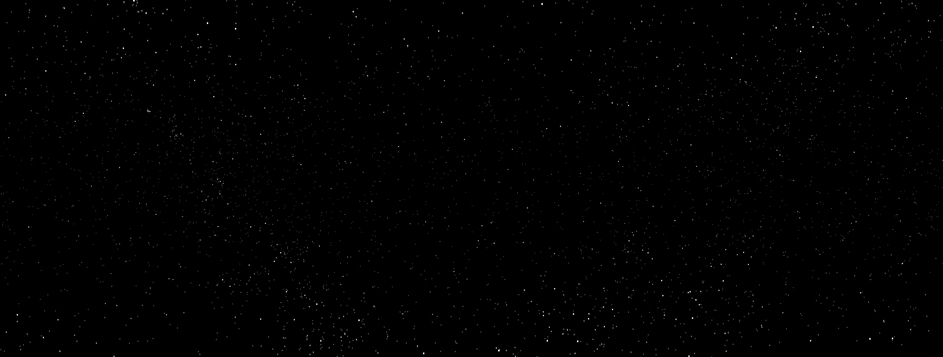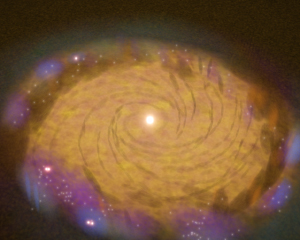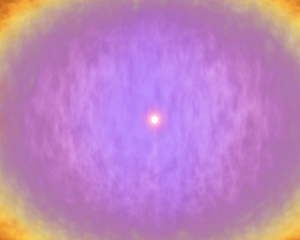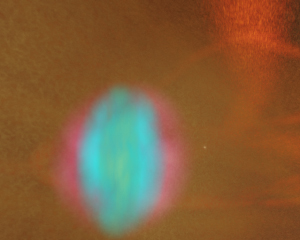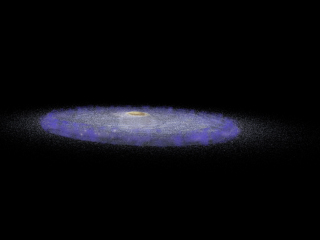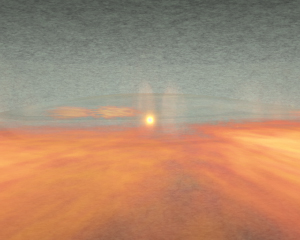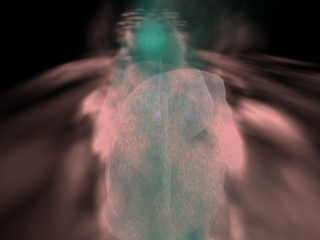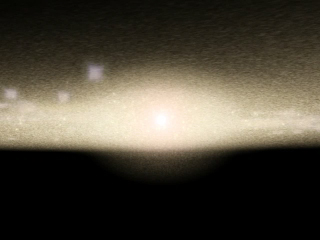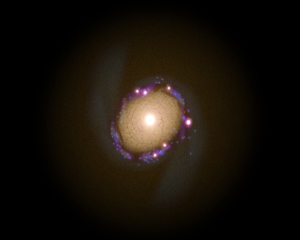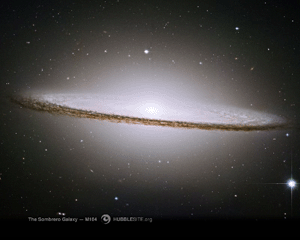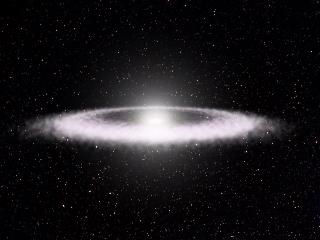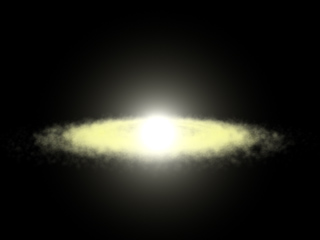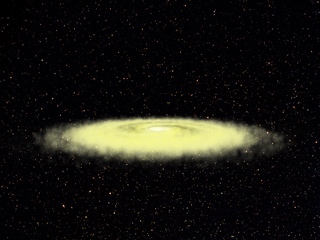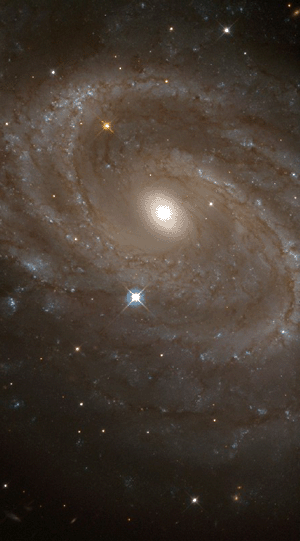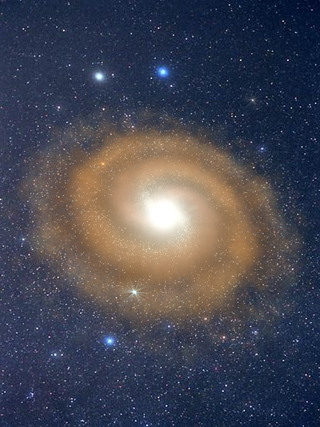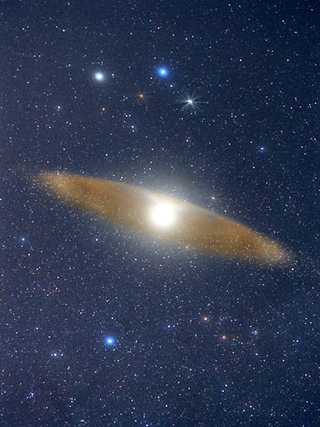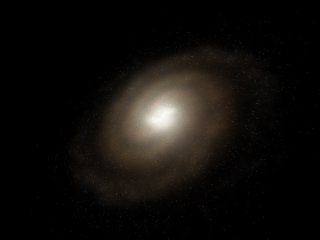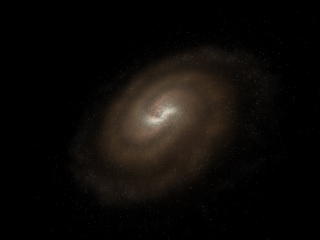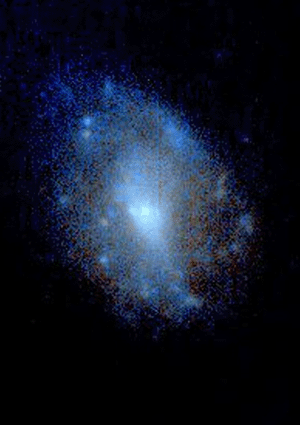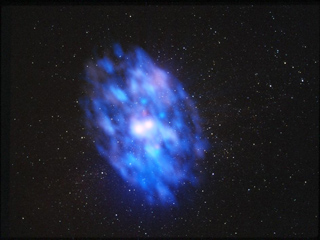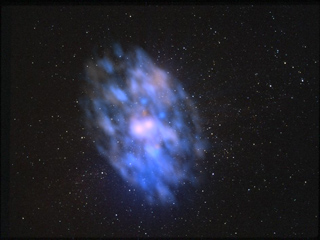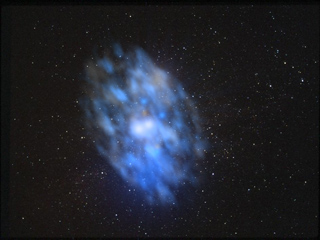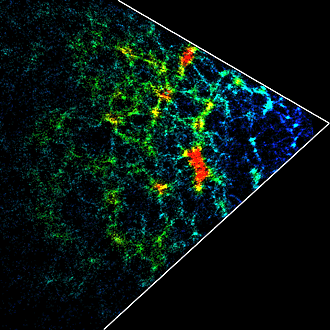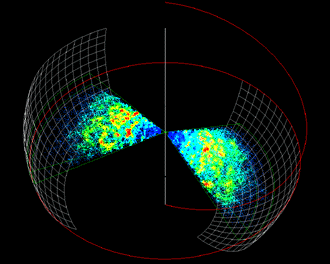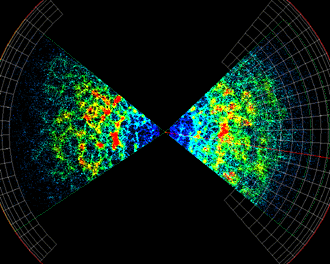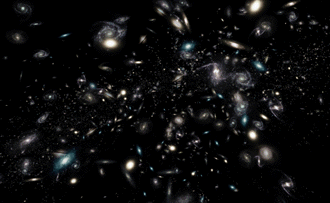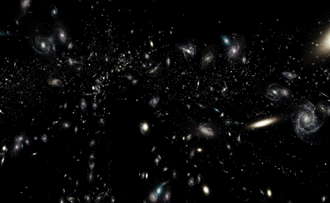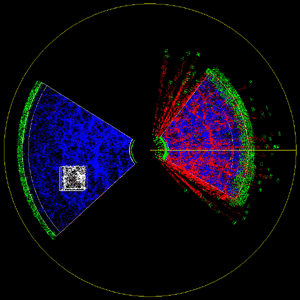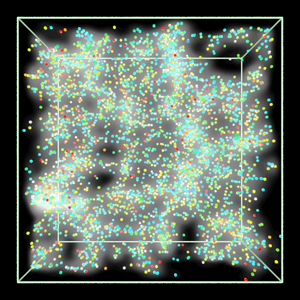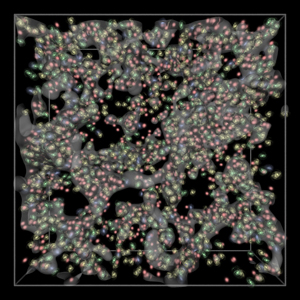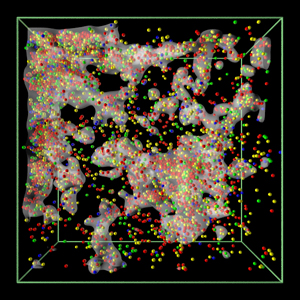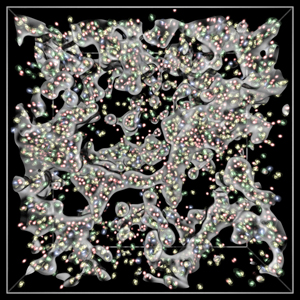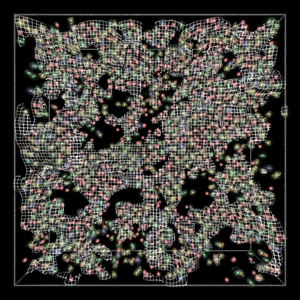Representing star fieldsIncludes projections onto spherical and cylindrical mapsWritten by Paul BourkeJune 2001
Creating good star fields is not as simple as it might seem. One approach (the physically elegant one) is to place some geometric object at the right location, generally a sphere at some fixed large distance from the center of the model. This has the problem of what primitive to use and how big should that primitive be. If the star object is too small then it will be missed by the raytracer, even with a high level of antialiasing. If the primitive is too large then the stars won't look like point sources. The same arguments apply to the distance the stars are placed from the center of the model. If it's too close then the stars will look large, if too far away then the stars will be missed by the raytracer. Fiddling the characteristics of the star positions depending on the typical camera position is tedious. One way around the above problem is to create a large sphere around the model and map a high resolution texture onto that sphere. This immediately solves the problem with the size of the stars, they will appear the same size irrespective of the radius of the sphere the texture is mapped onto. One implication is that the size of the stars will vary depending on the dimensions of the rendered image, so a different texture size may be required for small rendered images compared to large images. The following image 8192x4096.png has been created as a star map to be applied as a texture to a sphere using standard spherical texture coordinates. It is based upon real star positions. The magnitude, and therefore apparent brightness, is mapped onto the size of the dots. To assist with antialising, the stars are blurred. Note also the distortion (stretching) of the stars towards the top and bottom, this exactly compensates for the distortion introduced by the spherical (polar) texture mapping. The appropriate texture size depends on the resolution of the final images, a few different sizes are provided: 1024x512.png, 2048x1024.png, 4096x2048.png. 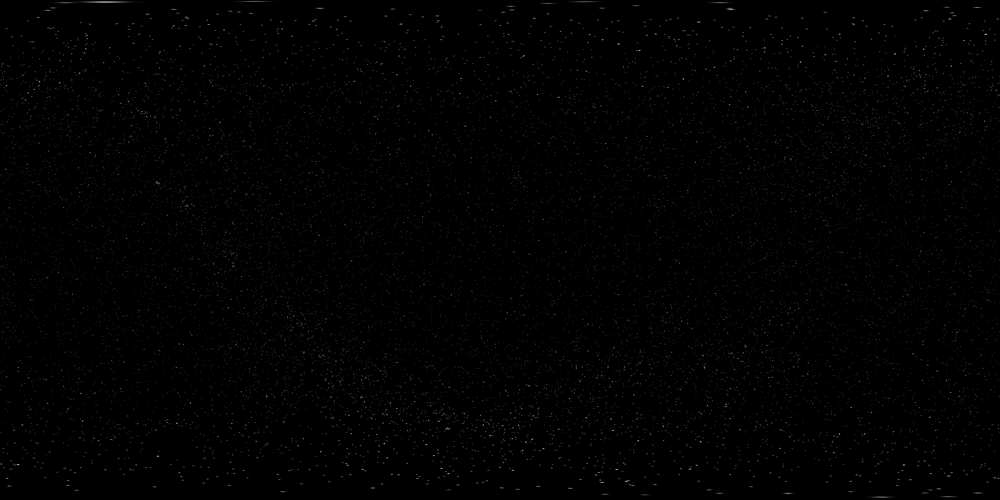 [ Click for high resolution version (8192 x 4096) ]
PovRay description The following illustrates how this might be applied as a texture map star sphere in PovRay. The exact settings for the finish {} may vary depending on other aspects of the model environment.
/* Star field */
sphere {
<0,0,0>, 1
hollow
pigment {
image_map {
png "starmap.png"
map_type 1 /* Spherical */
once
}
}
finish {
ambient 2 /* Inverse of earlier global ambient level */
diffuse 0
}
scale 1000000 /* Depends on model units */
}
Other issues
The following higher resolution spherical maps were generated for a project in conjunction with Chris Brooks. A different algorithm was used whereby stars, from the same catalogue, are placed on the image plane with a Gaussian spread and magnitude related to the star brightness. A selection of images are provided below, they are each 16 bit tiffs (for enough dynamic range), provided at 16K and 32K resolution, the last number in the file name relates to the maximum standard deviation of the Gaussian.
Star PositionsCollated by Paul BourkeBased on tables in the "Bright Star Catalogue, 5th Revised Ed." January 2000
Projection onto Cylinder and North/South polesCollated by Paul BourkeJanuary 2008
The following is the mapping onto a cylinder, including the top and bottom caps. The cylinder covers -50 to 50 degrees vertically, the planar caps being therefore 50 to 90 degrees (north pole) and -50 to -90 degrees (south pole).
It was originally intended to be used as a physical star projector, namely to be printed and stuck together to form a real cylinder with a bright light source on the interior. To this end there are alignment points, a red star at the north pole, a blue point at the south pole, green points spaced at 1 degree intervals across the boundaries and also showing positive right ascension at the equator. It is expected that these alignment markings would be removed with a physical marker or digitally once the alignment is understood. 
Simulated interaction between M31 and M32Jeremy Bailin, Paul Bourke, and Karl GordonJune 2004
Interaction between M31 and its satellite M32. Gray fuzz is the old stellar component, red circles represent the ISM, star formation/supernova events are bright white circles and the newly-formed stars are the smaller white circles. The passage of M32 through the disk triggers star formation at the observed location of NGC 206 and opens a hole in the disk at the observed location of a hole in the dust emission. Credit: Jeremy Bailin, Paul Bourke, and Karl Gordon. Movie: M31M32.mov
Representing galaxies and planetary nebulae
by Navpreet Singh | ||||||||||||||||||||||||||||||||
|
|
|
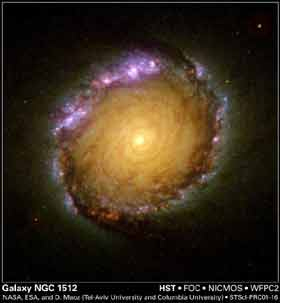 NGC1512 |

|
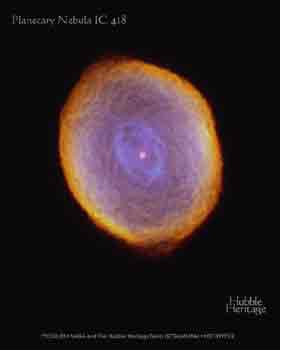 IC418 |
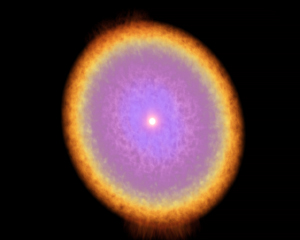
|
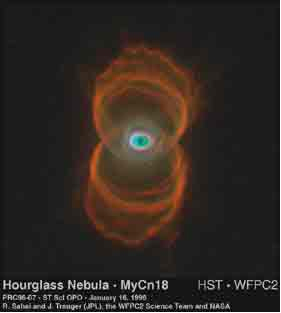 Hourglass |
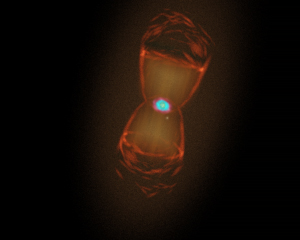
|
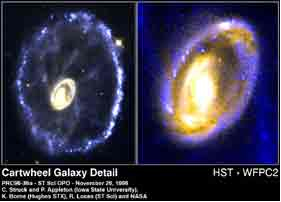 Cartwheel |
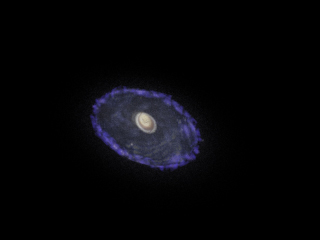
|
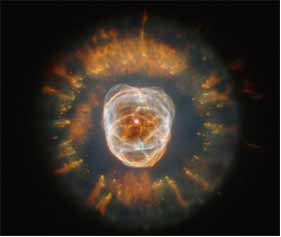 Eskimo |
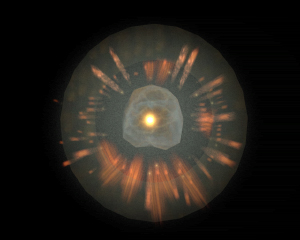
|
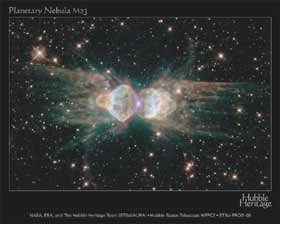 MZ3 |
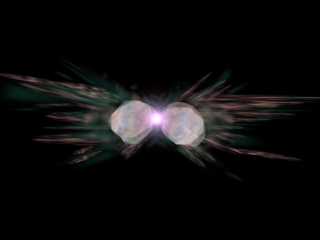
|
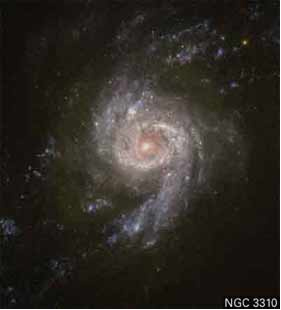 NGC3310 |
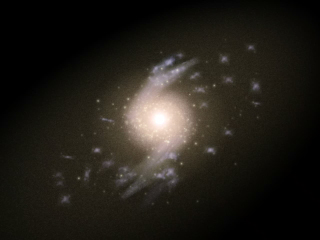
|
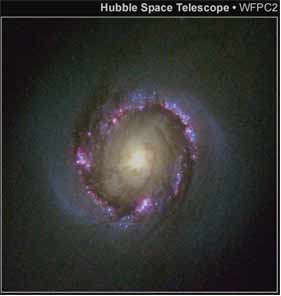 NCG4314 |

|
Modelling Galaxies Using 3DStudioMaxBy Sivakumar Maniam, Suzan Hendrata, Rebecca NgSupervised by Paul Bourke November 2004
|
